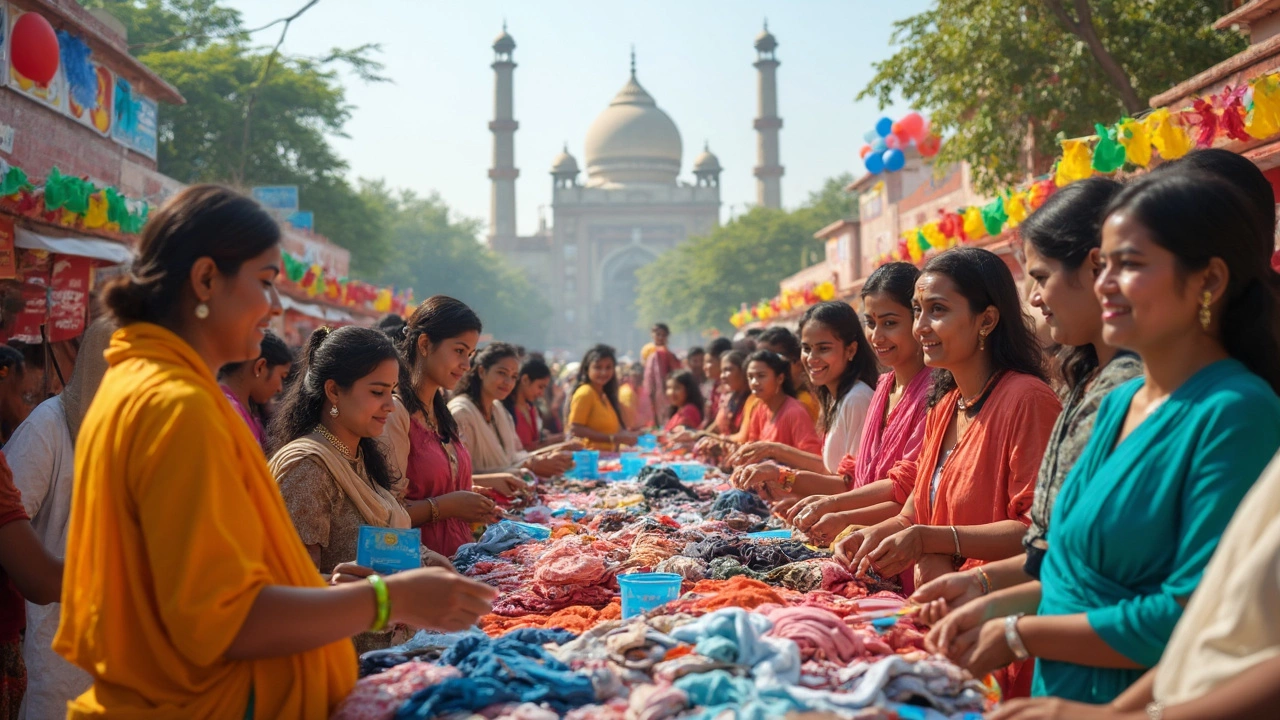
- Created by: Lydia Carmichael
- Completed on: 15 Jun 2025
- Categories: Events
Ever wonder which charity pulls in the most support at events? It's not always what you'd think—sometimes it's the global giants like UNICEF or the Red Cross, but local groups often make a big splash too, especially when a cause hits close to home. Being popular isn't just about a name; it's about trust, visibility, and how well a charity shares its story.
If you're planning a charity event and want lots of engagement, checking out what works for these top charities can save you from a ton of guesswork. It's not just about picking a big name; you need to match with a cause that grabs attention in your community. Want a packed room and generous donations? People feel more involved when they see a clear impact, so focus on organizations that share success stories and real results.
- Who Tops the Charity Charts?
- Why Do Certain Charities Attract More Support?
- How to Choose the Right Charity for Your Event
- Trending Charity Ideas for Today
Who Tops the Charity Charts?
If you’re trying to figure out the most popular charity, your answer depends a lot on what you mean by “popular.” Some charities raise the most money, while others score highest in public trust or online buzz. In the world of big fundraising and charity events, a few names keep popping up.
Let’s look at the data. For 2024, the following organizations led the fundraising charts worldwide. These groups keep showing up in everything from marathons to live-stream fundraisers:
| Charity Name | 2024 Global Fundraising ($ billion) | Main Focus Area |
|---|---|---|
| UNICEF | 8.6 | Children’s welfare |
| The Red Cross | 7.9 | Disaster relief |
| Doctors Without Borders | 2.4 | Emergency medical aid |
| St. Jude Children’s Research Hospital | 2.8 | Kids’ health/research |
| Feeding America | 2.3 | Hunger relief |
These groups hold up not just because of money, but the way they engage with people. They’re out there in the news, they get celebrities on board, and they’re all over social media. If you want to pick a charity that draws a crowd for your event, these names are safe bets, especially for global or national audiences.
But don’t forget, things look different locally. For example, in the UK, Cancer Research UK and Macmillan Cancer Support always do well at fundraising walks and runs. Meanwhile, animal charities like the ASPCA in the US keep a strong grip on the popularity charts, especially with younger donors. The key idea? People connect more with causes that feel real or close to them, and these chart-toppers know how to keep their work front and center.
Why Do Certain Charities Attract More Support?
The truth is, people get behind a charity when they feel their donation is actually going to fix something. It helps if they've seen that charity pop up everywhere—think TV, social media, and even billboards. Groups like UNICEF, American Red Cross, and St. Jude Children’s Research Hospital lead the way in the U.S. They’ve built trust over decades and they stay in the spotlight.
But there’s more to it. When disasters hit—such as the 2023 Turkey-Syria earthquake—the most popular charity for events often became one directly helping with aid and relief. People want quick results, so if a group can show exactly how donations are being used—say, providing clean water or emergency shelter—they’ll get a big bump in support.
Check out some numbers for perspective:
| Charity Name | 2024 Donations Raised (USD) | Main Focus |
|---|---|---|
| St. Jude Children’s Research Hospital | $2.3 billion | Children’s Health/Cancer |
| American Red Cross | $1.8 billion | Disaster Relief |
| Feeding America | $3.1 billion | Food Security |
| UNICEF USA | $700 million | Children/Global Aid |
Notice something? These charities have a super clear mission. They also have staff and systems to process donations quickly, and they’re good at showing results. Here’s what helps charities stand out and grab more support:
- Visibility: Constant presence on news and social media.
- Transparency: They share details about how every dollar is spent.
- Impact Stories: Real people and real results in their reports.
- Easy Donation Process: One-click online donations, easy event sign-ups.
- Big Community Involvement: Events, volunteers, and ongoing updates keep people involved.
If you’re running a charity event, focus on these tips. Pick a charity with a clear story, an easy way to give, and proof that donations get the job done. That combo always seems to pull in the biggest crowds and the most dollars.

How to Choose the Right Charity for Your Event
If you’re putting together a charity event, picking a cause can feel like a lot of pressure. It’s got to matter to your guests, but also be legit and easy to get involved with. Here’s what actually helps you make the right pick without getting lost in Google searches.
- Most popular charity isn’t always best for your group—sometimes a local food bank draws more support than a national brand because it’s relatable. Look at what’s trending in your area or impacting your guests directly.
- Transparency matters way more than a slick website. Use sites like Charity Navigator or GuideStar to check if a charity is open about where money goes. For example, Direct Relief scores high for transparency and spends around 99% of donations on actual program work, which is impressive in the charity world.
- Ask yourself: does this charity actually align with your event theme? If you’re holding a sports tournament, why not partner with Special Olympics or a group that provides athletic equipment to underprivileged kids?
- See if the charity has resources to support your event—some, like St. Jude’s, are known for event kits and helpful staff so you’re not starting from scratch. It makes the whole process less overwhelming.
- Don’t overlook guest input. Sending a quick poll to potential attendees can tell you what causes fire people up. When the group’s invested, you raise more money. Simple as that.
So if you’re set on a successful event, match your crowd with your cause and double-check you’re working with a group that’s trustworthy and prepared. It makes a real difference for donations and turnout.
Trending Charity Ideas for Today
If you want your event to stand out, keep up with what’s fresh and actually gets people involved. The way folks give is changing, and you’ll notice it’s not all black-tie dinners anymore. Creative, low-pressure events far outshine boring old galas. Here’s what’s getting attention this year.
- Charity livestreams: Platforms like Twitch and YouTube made it simple for anyone—gamers, musicians, even yoga teachers—to host live fundraising events. These streams are super interactive, with live chat and instant donations. In 2024, "Game Day for Good" raised $3.5 million in a single weekend for children’s hospitals just by streaming.
- Social media challenges: Remember the Ice Bucket Challenge? That kind of viral energy still works when it feels genuine. Last year alone, TikTok’s “Run for Pups” got nearly 25,000 people running and posting videos, raising over $700,000 for animal shelters.
- Walks, rides, and fitness events: They’re simple, low-cost, and people of all ages join in. Plus, sponsored steps or miles are easy to track with apps.
- Give-back shopping: Brands team up with charities for limited-edition products. Shoppers feel good and charities get a cut—no one feels pressured to donate cash. Adidas and Parley’s ocean plastic shoes sold out in hours, with proceeds cleaning up over 2,000 tons of ocean waste.
Community connection matters more than glitz right now. If you can add an online or streaming element, even better—Americans donated $3.1 billion during GivingTuesday 2024, a record high, and nearly half of that was via online campaigns.
| Event Type | Average Funds Raised (2024) | Who Gets Involved? |
|---|---|---|
| Livestream Fundraising | $20,000 per event | Youth & online communities |
| Fitness Challenges | $12,500 per event | All ages, workplace teams |
| Give-Back Pop-Up Shops | $8,000 per campaign | Shoppers, parents, young adults |
So if you’re picking a charity event idea, don’t stick to the old playbook. Try a most popular charity campaign that uses digital, fitness, or retail. You’ll reach more people and usually raise more money.